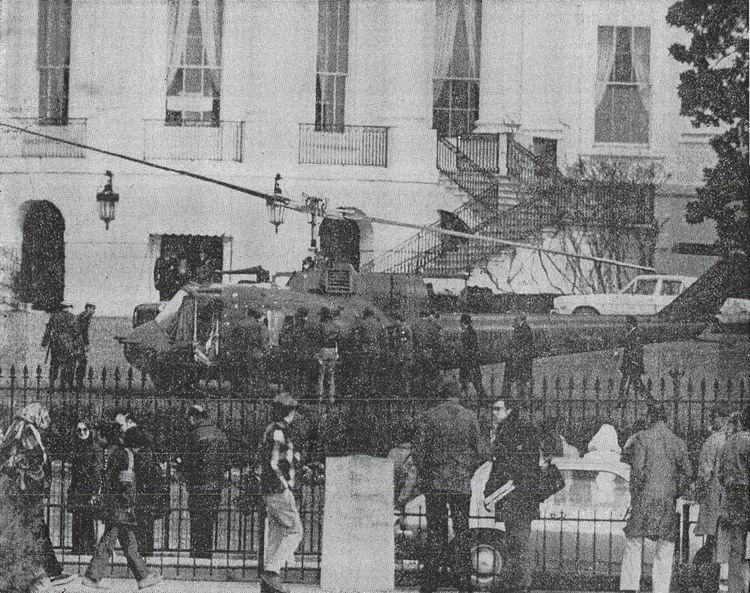Date February 17, 1974 Crew 1 Aircraft type Bell UH-1 Iroquois | Summary Stolen Aircraft Injuries (non-fatal) 1 | |
 | ||
Site White House, Washington, D.C., United States | ||
On February 17, 1974 Robert K. Preston stole a helicopter and landed at the White House.
Contents
Incident
At 2 A.M. on February 17, 1974, Robert K. Preston, a United States Army private first class, stole a United States Army Bell UH-1 Iroquois ("Huey") helicopter from Fort Meade, Maryland, flew it to Washington, D.C. and hovered for six minutes over the White House before descending on the south lawn, about 100 yards from the West Wing. There was no initial attempt from the Executive Protective Service to shoot the helicopter down, and he later took off and was chased by two Maryland State Police helicopters. Preston forced one of the police helicopters down through his maneuvering of the helicopter, and then returned to the White House. This time, as he hovered above the south grounds, the Executive Protective Service fired at him with shotguns and submachine guns. Preston was injured slightly, and landed his helicopter.
In a plea bargain, he pleaded guilty to "wrongful appropriation and breach of the peace," and was sentenced to one year in prison and fined $2,400. This amounted to a six-month sentence, since he had already been in prison for six months at the time. He eventually served two months of hard labor at Fort Riley, Kansas, before being granted a general discharge from the Army for unsuitability.
At the time of the incident, President Richard Nixon was travelling in Florida, and First Lady Pat Nixon was in Indianapolis, Indiana, visiting their sick daughter, Julie.
Motivation of perpetrator
Preston was a 20-year-old private first class in the U.S. Army, stationed in Panama City, Florida. Although he was training to become a helicopter pilot, he abandoned the training due to "deficiency in the instrument phase". Preston had enrolled in the JROTC program at Rutherford High School in Panama City, Florida and had longtime aspirations to a military career. After being taken into custody Preston indicated he was upset over not being allowed to continue training to be a helicopter pilot, and staged the incident to show his skill as a pilot.
Influence
It has been suggested that news reports of Preston's actions inspired Samuel Byck to attempt to crash a passenger airplane into the White House on February 22, 1974. This implication has also been used as a plot device in the film dramatization of Byck's attempt, The Assassination of Richard Nixon.
Engagement policy
In 2005 there were several incidents when unidentified planes flew into the Washington DC airspace. In comments on these incidents, Timothy Noah of National Public Radio reminded his audience of the 1974 Preston incident, when he suggested that Washington DC security officials had an unacknowledged policy to not fire on unidentified aircraft when doing so might lead to injuring bystanders on the ground. He pointed out that security officials had held their fire until Preston's helicopter was hovering low over the deserted South Lawn, where a crash would not have injured bystanders. "But here's the nub: Neither the Maryland police nor the Secret Service fired on the helicopter at any time when its downing threatened the lives of any bystanders."
